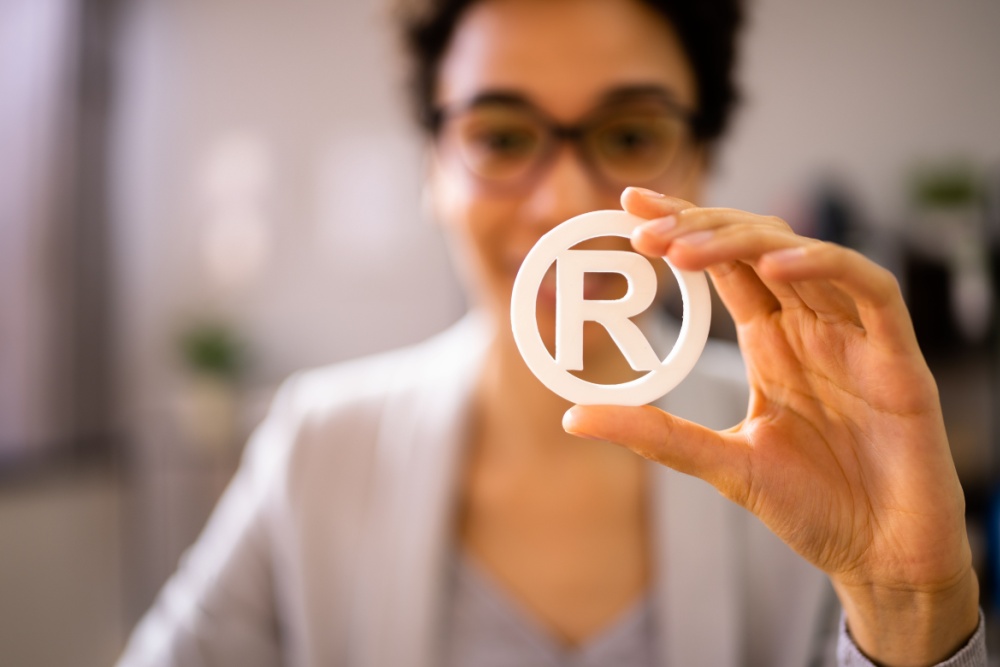Registering a trademark is a process, and requires critical decisions along the way. Understanding the process and its potential pitfalls, will go a long way to minimizing risk, and getting a mark registered effectively and cost efficiently.
Your company name, logos and reputation, and all goodwill associated with your trademarks, are invaluable. They are the basis of your business.

What is a Trademark?
A trademark designates source. Take a walk down your grocery store aisle. Cereal is made and sold by various manufacturers – Kellogg’s, Post, General Mills. At a hardware store, you will see tools made by Craftsman, DeWalt, Bosch. You have an association with each of these brand names, a certain level of quality. A brand name may not represent the best quality, but you know what kind of product you are purchasing. This is why a trademark is key – it serves to provide valuable information to the consumer.
Example Scenario
For example, if someone came out with a line of whiskey under the name Jack Daniel (no ‘s’), used the same kind of black label or even called themselves Jane Daniels, a potential consumer might assume that the product is made by the same manufacturer, or was at least related or authorized. This is confusion, and qualifies as trademark infringement. State and federal trademark laws allow for trademark owners to take legal action against such use.
Registration is not required to establish trademark rights. Trademark rights are created by use – the use on specific goods or with specific services, in a specific geographic area. For instance, a coffee shop called Brew Kitty might be known only in the Boston area. Even without registration, it has established ‘common law’ trademark rights in the name for that area only, for the sale of coffee. If they open another shop in Worcester, Massachusetts, and also expand their offerings to sandwiches, they have also expanded their common law rights to another part of Massachusetts, and with respect to other goods.
If someone else were to open a coffee shop calling themselves Brew Cat in the Boston area, then Brew Kitty would have a good case against this third party. However, another company called Brew Kitty would be able to operate in Springfield, Massachusetts, without a problem, unless the original owner could show that its name and mark were known there.
APPLICATION BASIS
An application to register a trademark with the PTO can be filed based on actual use of the mark, or intent to use. Someone launching a manufacturing business might not yet be making the products, but is in the process of building the factory or looking for a licensee. In such a case, an intent to use application acts as a placeholder at the PTO. No registration will issue until the mark is actually in use, however.
Generally, before filing an application, it is advisable to conduct a basic screening search to determine the likelihood of successfully registering the mark. The first test is whether the mark can serve as a trademark. The second is whether the mark could be considered confusingly similar to any other third party application or registration.
All goods and services are put into one of 46 classes. For instance, clothing is class 25, video games is class 9. In some cases, there may be more than one class that might be appropriate. An attorney can help decide the best strategy for selecting your class.
COSTS
The costs to file an application will depend on a few factors: the complexity of your application, the number of classes, and whether your mark is in use. Currently, the PTO charges $250-$350 per class. This rate is expected to increase in the near future.
If the mark is already in use, then the application will proceed to registration, so long as all requirements are met. If the mark is not yet in use, a Statement of Use with evidence of such use must be filed. There are additional fees for this, including a $150 PTO fee. The attorney fee for preparing and filing the application can range from $1200-2000 or more, depending on complexity and the number of classes. If the application receives an objection, a response must be filed with the Examining Attorney. Most rejections may be overcome but may involve extra costs and fees. Failure to respond will lead to the loss of the application and may lead to a loss in rights.
Common law trademark rights can be difficult to enforce. The burden is on the trademark owner to show that it is using the mark in each specific area, for the specific goods, and has developed a reputation. An isolated sale or two is not enough.
Watch Services
A watch service can alert a business as to new uses of marks that may conflict with its mark, or cause potential confusion. A watch service may consist of a periodic review of the U.S. Patent & Trademark Office databases and state trademark databases for new applications, state business records for new business name registrations, or regular searches on Google and other search engines for new uses of a mark.
Once such a potential conflict is located, the business is notified. The business must then decide whether action is warranted.
We offer watch services for clients, depending on what is needed.
I have known Diane for over two years and she helps me with my Intellectual Property needs for my company BOON-dah LLC. “Incredibly Efficient” is the phrase that comes to mind when I think about Diane!
– Praba Soundararajan PhD – CEO & Founder Boondah Learning
